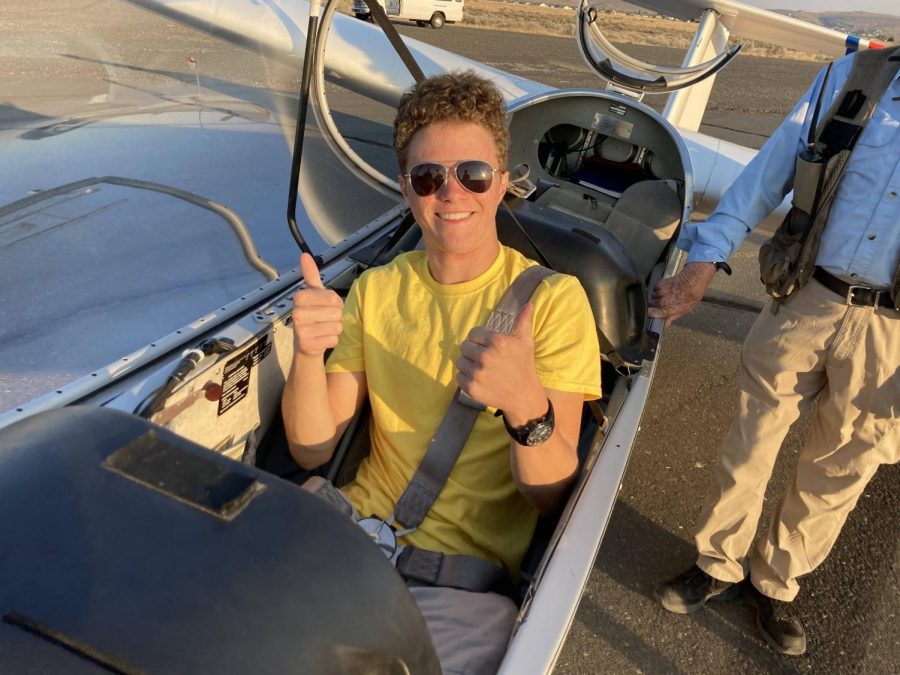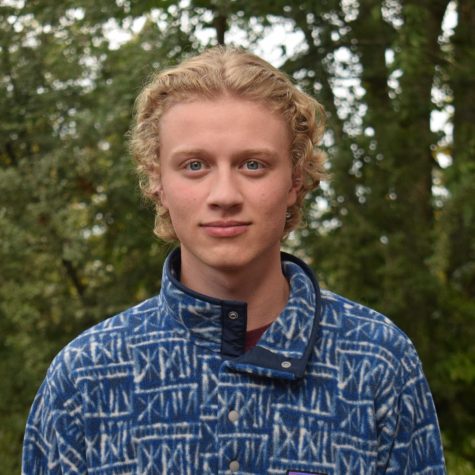Senior Jack Bianchi Takes to the Skies
May 20, 2023
Seattle Prep senior, Jack Bianchi, likes planes. Actually, that completely understates Bianchi’s relationship with and expertise of aviation.
It all started in in 2007, when Bianchi’s dad got his first level of pilot license and was working on his instrument rating which permits pilots to fly in any weather conditions just based on instrument readings. Bianchi’s dad would take Bianchi along with him and his instructor on flights to PNW destinations. Bianchi said, “I got used to flying with my dad and his instructor in weather where all you could see was white, if you were more than 200 feet above the surface, we couldn’t see it. My dad always tells me how as a small child I slept through the heaviest turbulence.” On nice days, Bianchi would be allowed to sit up front in the plane, but he was too small to see over the dashboard.
In May 2009, Bianchi went on a flight with his dad to Copalis Beach in a plane that had a dashboard he could see over. Bianchi recalled, “On the return flight, my dad let me take the controls and fly straight and level. I remember all I could see over the dash was the tress of the Olympic rain forests.”
Bianchi himself learned how to fly and eventually got his license, being a general aviation pilot ever since. Many people think of commercial airliners like the Boeing 737 when they hear about aviation, but in general aviation, Bianchi flies “single-engine piston aircraft up to 12,500lbs in visual flight conditions” such as the Cessna 150 which he has been flying recently, which is 1,600lbs, flies up to 124mph, and costs $40/hour to fly. In contrast, commercial aviation involves planes like the 737 that are up to 155,000 lbs., flying up to 500mph and costing $17,000/hour. Some may think of movies like Top Gun, but that’s more like what military pilots do, being able to “fly low at high speeds, fly in restricted airspace, break the sound barrier, and land at military bases” as they aren’t subject to the same FAA regulations as other pilots. Bianchi’s favorite plane to fly is the Beechcraft T-24 Mentor, a fighter jet trainer used by the US Military from 1953 to the 1990s which he said, “handles like the sports car of planes.”
Bianchi said that he flies partly because he likes to, but largely for proficiency. “Each flight I try to work on some area of improvement. On my last flight I was doing landings at Boeing field, working on putting my wheels about 3 feet before the start of the runway center line.” Every time he flies, he monitors the weather conditions hours before takeoff. When he arrives at the airport, he makes sure the weather is within limits and then completes a comprehensive inspection of his aircraft. Once he takes off, he spends about 80% of the time looking out the window for traffic and the rest of the time he’s checking instruments to make sure everything is functioning properly (known as “scanning.”) Bianchi most commonly navigates via reference to ground landmarks, and during any free moment he gets, he likes to do photography.
While most flights go without issue for Bianchi, he has had a few stressful moments. One time, he was practicing landings at Boeing Field when the alternator failed on his aircraft and he had no electricity, including power to his radio transmitter. He used his transponder to communicate that his radio was out, and the controller had him rock his wings to confirm instructions. Bianchi continued, “When I landed and pulled off the runway, I called the control tower’s number and put my phone under my headset and got my taxi instructions that way.” Another time, he was waiting for instructions from the controller on when to turn, but they forgot about him. He ended up making it to Lumen field before turning, when he usually would have turned before Cleveland High School.
Bianchi offered some fun facts about flying and aviation, such as how he is, contrary to popular belief, allowed to use his cell phone while flying “as long as it doesn’t affect the safety of the flight.” There are also “sterile cockpit procedures” which, when in effect, nothing that is not critical to that portion of the flight is to be discussed. Another fact is that Bianchi can open his windows when flying just like a car. Pilots in pressurized commercial airliners cannot, but general aviation aircraft are actually designed to be leaky. Finally, Bianchi said that “the use of airplane mode (on personal devices) is not to ensure the safety of the flight, as aircraft navigation technology is so robust that cell signal is not a problem. Your phone needs to be in airplane mode by request of the FCC because in the air, your phone will use 6-10 cell sites instead of 1.”
Bianchi said that for anyone who wants to get into piloting and flying, there are many great programs to do so. “If you have no concerns about the money you can enroll in a flight school, but it could cost as much as a couple of years in college. The Civil Air Patrol is a great resource for young aspiring pilots, and they will use Air Force funds to pay for flight training. The Civil Air Patrol offers flight scholarships, flights, aircraft, and flight academies. As well as a community of pilots to guide someone through the process. You can also go to the FAA directly for flight scholarships.”
Bianchi plans on following aviation as his career path. He would like to go into commercial airline flight later on but wants to start his career in something more exciting. He intends to continue progressing with his level of flight certification and become an instructor later in college.



